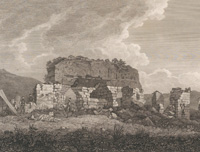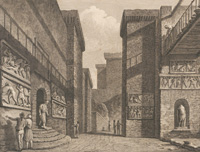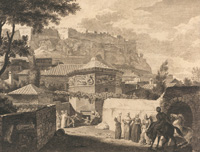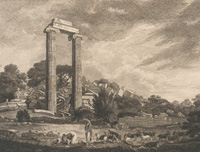
introduction
the profile of the travellers
from a dutch point of view
the power of monuments
idealized landscapes
in search of antiquities
everyday life among ruins
in the service of the divine
athens: a place or an ideal?
ancient vs. contemporary
•
acknowledgements
selected bibliography
catalogue
links and resources travellers
|
|
|---|
in search of antiquities
If accurate representations of the originals were published, the world would be enabled to form not only more extensive but juster ideas concerning architecture and the state in which it existed during the best ages of antiquity.
James Stuart and Nicholas Revett (1762)
Admiration and love for antiquities was common for most travellers and artists visiting the Eastern Mediterranean during the 18th and 19th centuries. However, their opinions varied significantly with respect to the recording of ancient ruins and the way thye should be depicted and described.
In contrast to the idealistic representation of ruins, some travellers were more interested in precise and accurate recording of the ancient buildings and art. Their journals are on the one hand filled with measurements, architectural plans, notes and bibliographical references, but included on the other hand scenes with people posing in front of the ruins that they so diligently recorded.
Some of these artists and architects were sponsored by the so-known 'Society of Dilettanti'. This 18th-century society comprised of British scholars and noblemen, aiming to promote knowledge and appreciation of ancient Greek aesthetics.
Due to more systematic topographic and archaeological research in the Eastern Mediterranean, more antiquities were discovered and studied in the 19th century. At the same time, travellers started being interested in acquiring and collecting antiquities and transporting them back to their own countries.




